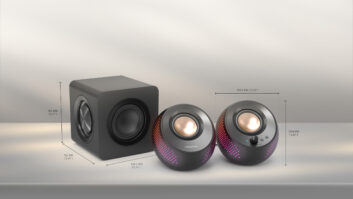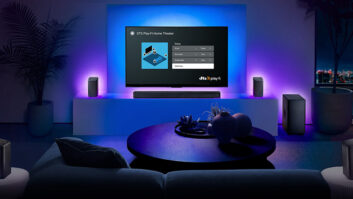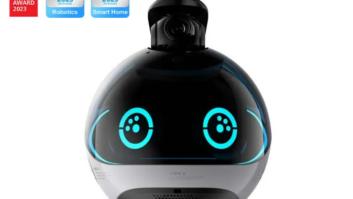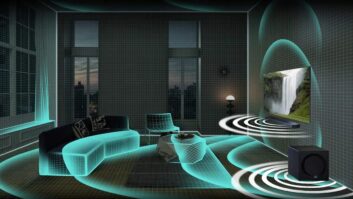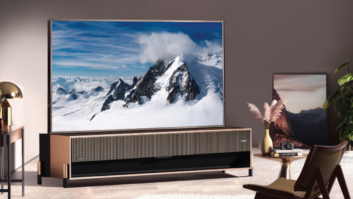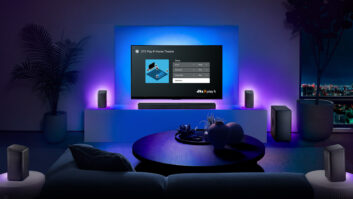LAS VEGAS – DTS is positioning its DTS:X object- based surround technology as a flexible alternative to Dolby Atmos.
DTS:X delivers an immersive effect “across the whole gamut of speaker configurations,” said Dave Casey, DTS’s senior director of product development. DTS:X is also more forgiving of speaker placement than other surround formats.
DTS “worked with manufacturers to make sure the first implementations include pre-selected [speaker] layouts which overlap with familiar layouts,” a spokesperson added. Familiar layouts include 5.1 layouts without height speakers. “We don’t require elevation speakers,” DTS chairman/CEO Jon Kirchner told TWICE. “We can render height virtually.” It will be the manufacturer’s decision, however, to support traditional 5.1-speaker layouts, he noted. Sound systems with 2.1 speakers are also supported.
Although there are advantages to more and more speakers, he noted, “flexibility adds more value to the consumer.” Dolby, he said, “pushes upfiring speakers.”
Audio companies implementing the technology, however, initially won’t support “an infinite number of speaker configurations,” Kirchner said.
A DTS spokesperson confirmed that home-theater speaker configurations designed for playback of Dolby Atmos object-based soundtracks could be used to play back DTS:X soundtracks.
For its part, Dolby said that with Atmos, “to achieve an authentic three-dimensional sound space requires the addition of a layer of sound above the listener.” That “can be achieved with overhead speakers or Dolby Atmos-enabled speakers working in conjunction with listener-level speakers. Height information in an object-based audio format, however, cannot be accurately rendered from the addition of virtualization driving the primary listener level speakers.”
Dolby did say, however, that “Dolby Atmos-encoded content makes channel-based playback systems sound better,” although “there would be no independent audio objects present [if native Dolby Atmos content is decoded and played back through a traditional 5.1 or 7.1-speaker setup].” As a result, a bee won’t buzz closer to and farther from your head in the X axis, just around your head in the X axis.
During International CES, DTS staged a public demonstration of a 22.2-channel system with multiple overhead speakers and a 360-degree screen. The company also privately demonstrated a 7.4.1 system consisting of seven floorstanding speakers and four on-wall speakers mounted up high on the wall.
During the 7.1.4 demo, a bee buzzed around the room, seeming to get closer and farther away from the listener. In an underwater scene, waves seamlessly panned around listeners. When asked whether standard surround soundtracks could be upmixed to DTS:X, Casey would say only that “lots of good stuff is coming in March” when the company plans a formal launch.
Companies launching DTS:X electronics in 2015 consist of Anthem, Denon, Integra, Krell, Marantz, McIntosh, Onkyo, Outlaw Audio, Pioneer, Steinway Lyngdorf, Theta Digital, Trinnov Audio and Yamaha.




